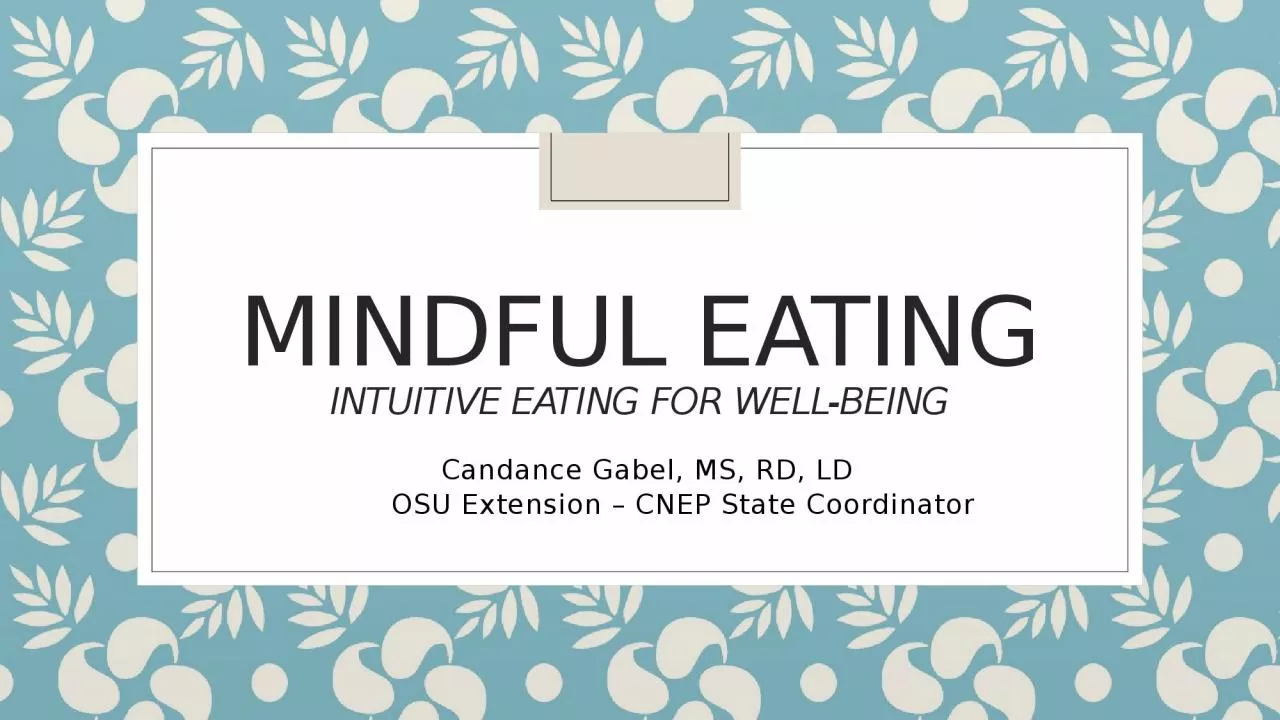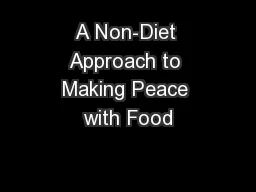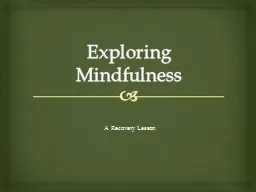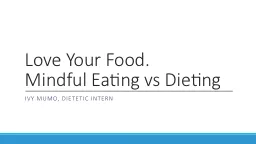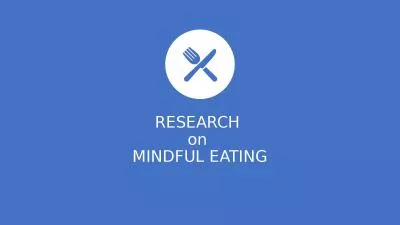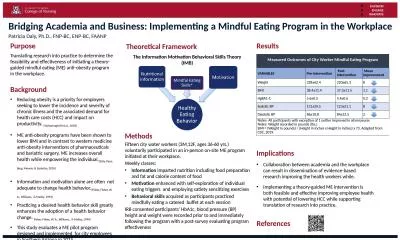PPT-Mindful Eating Intuitive Eating for Well-Being
Author : claire | Published Date : 2022-06-11
Candance Gabel MS RD LD OSU Extension CNEP State Coordinator Mindlessness Being on automatic pilot A sense of living mechanically Living in the past or the future
Presentation Embed Code
Download Presentation
Download Presentation The PPT/PDF document "Mindful Eating Intuitive Eating for Well..." is the property of its rightful owner. Permission is granted to download and print the materials on this website for personal, non-commercial use only, and to display it on your personal computer provided you do not modify the materials and that you retain all copyright notices contained in the materials. By downloading content from our website, you accept the terms of this agreement.
Mindful Eating Intuitive Eating for Well-Being: Transcript
Download Rules Of Document
"Mindful Eating Intuitive Eating for Well-Being"The content belongs to its owner. You may download and print it for personal use, without modification, and keep all copyright notices. By downloading, you agree to these terms.
Related Documents

